
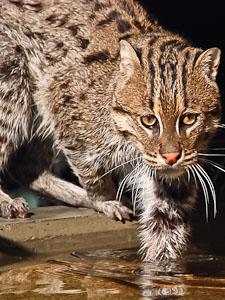
Later, reports Bangladesh's The Daily Star, villagers dumped the cat's broken body in a river. Police searched but never found the cat. They investigated but held no one responsible.
As these villagers fought to rid their town of the fishing cat, wildlife biologist Passanan "Namfon" Cutter was trying to find other fishing cats approximately six hundred miles to the southeast. Kneeling on the ground, she worked busily to radio-collar her first fishing cat from a newly discovered breeding population in Thailand's Khao Sam Roi Yot National Park, a major find considering biologists put fishing cat numbers at fewer than ten thousand worldwide. She would eventually collar seventeen individuals, their blips sending back the most intimate look yet into the life of this mysterious feline
Fishing cats have rarely been documented in nature, despite their close proximity to human development. What researchers do know is both significant and scarce. The fishing cat resembles a leopard that shrunk in the wash. They love water and diving for fish, and yet, their skin doesn't get wet. They hide in plain sight, and they are disappearing at an alarming rate. More than 50 percent have disappeared in the last eighteen years, according to a 2007 International Union for Conservation of Nature (IUCN) Cats Red List Workshop. If trends continue, researchers expect a similar magnitude of loss in the next eighteen years.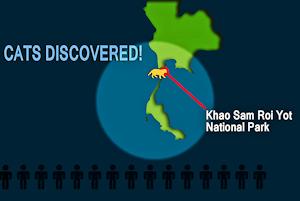
More than likely, Asia's rapidly declining wetlands, the cat's main habitat, is a driving factor behind the animal's disappearance – 50 percent of Asia's wetlands have been lost or are severely threatened. Massive shrimp farming efforts in Thailand, a world leader in shrimp exports – a key economic staple of the region – are destroying mangrove forests and polluting water supplies.
In Thailand, abandoned shrimp ponds leave behind such degraded soils that they account for a loss of about $200,000,000 a year, according to a 1997 TED Case study. Combine this with the triple threat of revenge killing, bush meat hunting and the medicinal trade, and the fishing cat becomes emblematic of human impacts on one of the world's most endangered ecosystems.
Unseen Neighbors
A fishing cat can live in the marsh grasses at the edge of a bustling village, and no one will know it's there, says Cutter. Villagers rarely see the cat, except when they catch it raiding chicken coops or snared in fishing traps. It is therefore poorly understood. In the past few years, anecdotal evidence of the cat's disappearance throughout its range – and its 2010 listing as endangered on the IUCN Red List – has spurred a spate of new research and protection efforts for the cat.
In particular, Cutter has implemented a series of novel camera-traps, GPS-monitoring and capture-release studies for the cat. She is studying the potential transmittal of zoonotic diseases and is working with villagers on the animal equivalent of CSI to investigate rumors of fishing cat predation on livestock. Special night vision camera-traps have already revealed that feral dogs and cats may be the more frequent culprits.
According to Cutter, an especially interesting conservation message in the fishing cat story is that saving the cat could reap benefits for human health. Promotion of the better water and land management that will support the cat likely will lead to improved natural resources and sanitation for surrounding communities, she explains. "When you've got mice in your house, or worse yet, rats, what do you do?" asks Cutter. "You get a cat." Domesticated cats have long proven their worth when it comes to managing pest species in homes and farms around the world, although sometimes their predatory instinct takes over and they wreak havoc on local bird populations. That controversy aside, the fishing cat may very well be performing a similar service in terms of rodent management for farmers in Thailand.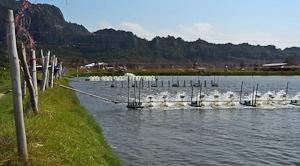
Of particular interest to Cutter is the potential that the cats might help control the spread of leptospirosis, a nasty bacterial infection that makes malaria and dengue fever look like the common cold. This disease is carried by rats and spreads when rat urine mixes with water. A barefoot rice farmer can become exposed to the bacteria through a miniscule cut while wading through infected water. Leptospirosis also poses a threat to cows, causing them to miscarry, says Cutter. The infection is more widespread in regions of Thailand lacking fishing cat populations. There is no scientific study correlating fishing cat presence or absence with the prevalence of the disease, but Cutter plans to test the idea.
A Conservation Paradox
Fishing cats could also prove ambassadors of a unique conservation approach for endangered wildlife in general. Unlike most wildlife conservation efforts, the cat can actually thrive in developed areas, so long as they're left alone.
Cutter searched the mangrove forests and remote marshlands for seven years and was astounded when she found them living in relatively robust numbers around a busy fishing village. The signs of the fishing cat were everywhere – tracks in the mud and scent spraying on farm shacks and bags of chicken feed. "It even looked like the cats were using drained shrimp ponds as communal latrines," remarked Karen Povey, President and CEO of the Clouded Leopard Project, after visiting Cutter in Thailand.
This fact could mean a different social, economic and political playing field for negotiations that would create protected areas and help establish wildlife conservation practices. Large swathes of wilderness may not actually be needed to make sure the cats survive, says Cutter.
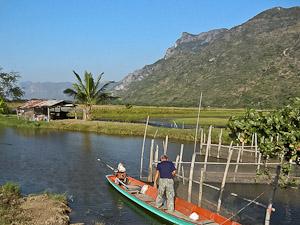
Fishing cats are a species of highest concern for conservation in Southeast Asia. Wira Siwatthanatrakun, the governor for the Prachuap Khiri Khan province in central Thailand, made fishing cat conservation part of the provincial natural resources protection policy in 2010. Internationally, the Smithsonian's National Zoological Park, the Minnesota and Cincinnati zoos, the IUCN, the Fishing Cat Conservation Project, Felidae Conservation Fund, Wildlife Conservation Society, and Big Cat Rescue are some of the main proponents of fishing cat research and conservation. In fall 2009, The Walt Disney Company's Friends for Change: Project Green selected Conservation International's Freshwater, Forests and Fishing Cats program in Cambodia's Tonle Sap Lake as the recipient of significant funding for conservation efforts. In short, action on protecting this cat is accelerating.
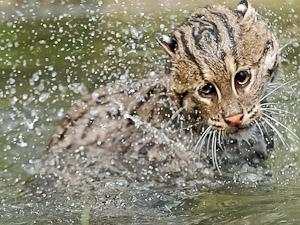
Fishing cats bring together a wide array of conservation and public interests. They represent a novel and contradictory species, a cat in water, whose shyness helped it tip-toe under the radar of public and scientific attention until recently.
Less than a year after Cutter began monitoring the cats of Khao Sam Roi Yot, ten of the seventeen fishing cats she had been following had been killed or disappeared, including, Chogun, her most recently collared male. He was rumored shot and his collar buried. Retribution killing and direct poaching seemed likely causes for the cats they've found, reports Cutter, but the reasons for the rest of the disappearances remains a mystery.
A CAT in WATER is born
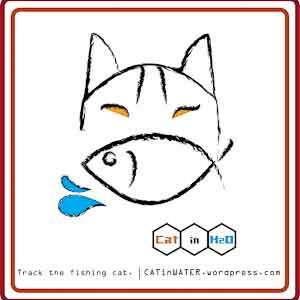
To do this, we will implement advanced camera-trapping methods. These cats are rare, shy and masters of going unseen. In addition to undertaking more traditional wildlife photography – using blinds – motion-detecting camera traps will afford the opportunity to record behaviors that are unaffected by the presence of a human photographer. If all goes well, with the help of Cutter, we will set up cameras in a stretch of restored mangrove with a known resident female fishing cat – one of Cutter's new sites in a more urbanized setting that has seen fishing cat activity. In capturing photographs of the cats, we may be able to record behaviors that would otherwise remain a mystery.
What began as a conversation over coffee turned into an international adventure, garnering attention from editors at National Geographic Magazine and National Wildlife, non-profits, researchers, and people that, until recently, had never heard of the fishing cat. Following this publicity, more than 130 individual backers, as well as non-profit groups like International Society for Endangered Cats Canada, The WILD Foundation and the Columbus Zoo chapter of the American Association of Zookeepers, donated the funds to support our travel to Thailand this December to meet up with Cutter and join her as she expands her research from the villages lining Khao Sam Roi Yot National Park into the more remote reaches of the wild in search of more fishing cats.
Cyber Adventurers
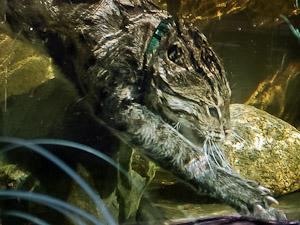
Participation is already in full swing. One reader submitted a video that illustrates how everyday shrimp-buying habits in the United States are affecting the well-being of fishing cats in Thailand. Others have sent in photos taken at their local zoo, and one reader even tweeted us his peer-reviewed scientific paper about the discovery of fishing cats in Cambodia. What we see forming is a new community around this elusive animal, something that we hope will keep growing until fishing cats no longer have to worry about being beaten to death, left without a home or sold on the black market.
Interact with this unique project by visiting CAT in WATER.

Photos are copyright protected and may not be reproduced without permission. Photos are used with permission of Morgan Heim and Karen Povey.